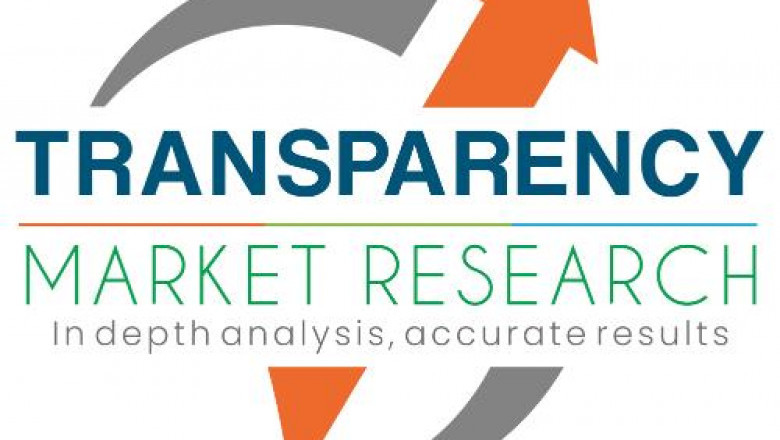views
The Teflon Heat Exchanger Market is on a robust growth trajectory, with its value projected to soar from US$ 1.1 Bn in 2023 to US$ 2.5 Bn by 2034, expanding at a compound annual growth rate (CAGR) of 7.7%. This growth is being driven by the increasing demand for energy-efficient and corrosion-resistant heat exchange systems across various industrial sectors.
What Are Teflon Heat Exchangers?
Teflon, or polytetrafluoroethylene (PTFE), is a high-performance fluoropolymer known for its non-reactivity, low friction, and exceptional resistance to chemicals and high temperatures. These characteristics make PTFE an ideal material for heat exchangers used in industries such as:
- Chemicals and pharmaceuticals
- Oil & gas
- Food & beverage
- Metal processing
- Energy & power
Teflon heat exchangers offer a unique combination of thermal stability, chemical resistance, and operational durability, making them especially useful in harsh processing environments.
Key Drivers of Market Growth
1. Energy Efficiency in Focus
As industries face mounting pressure to optimize energy use and reduce carbon emissions, PTFE-based heat exchangers are becoming essential. These units help industries minimize thermal losses, maximize energy recovery, and lower operational costs.
For example, industries like metal processing, which accounts for 40% of all industrial greenhouse gas emissions, are increasingly adopting PTFE heat exchangers to enhance energy efficiency. Moreover, rising electricity prices, such as the 3.6% hike in U.S. rates in 2023-2024, are pushing industries toward energy-saving solutions.
2. Rising Sustainability Efforts in Power and Waste Management
Teflon heat exchangers play a vital role in sustainability efforts, particularly in power generation and waste incineration. These systems:
- Reduce water loss and geothermal fluid emissions
- Enable flue gas desulfurization (FGD) in fossil-fuel power plants
- Aid in heat recovery from exhaust gases
By integrating Teflon tubing into heat exchange systems, plants can capture more waste heat and significantly lower their environmental footprint.
Regional Outlook: Asia Pacific at the Helm
In 2023, Asia Pacific emerged as the leading region in the Teflon heat exchanger market. The region's dominance is underpinned by:
- Rapid industrialization
- A thriving metal processing sector
- Strong presence of major manufacturers
India, in particular, is witnessing notable growth in its mineral-based industries. According to the India Brand Equity Foundation (IBEF), as of FY22, the country reported 1,319 active mines, with a significant portion dedicated to metallic minerals—a key end-use sector for Teflon heat exchangers.
Market Segmentation Insights
By Type
- Shell and Tube Heat Exchangers
- Plate Heat Exchangers
- Air-cooled Heat Exchangers
- Others
By Size
- Small-scale (Up to 15 kW)
- Medium-scale (>15 - 150 kW)
- Large-scale (>150 kW)
By End-use Industry
- Semiconductor
- Chemical
- Drug & Pharmaceutical
- Food & Beverage
- Metal Processing
- Petrochemical
- HVAC
- Energy & Power
Each segment has distinct requirements that PTFE-based systems can efficiently fulfill, especially in terms of durability, temperature resistance, and chemical compatibility.
Technology and Innovation Trends
Recent developments in the market underscore a shift toward smart, sustainable, and customizable heat exchanger systems. For instance:
- In June 2024, Shenzhen Superb Heater Technology Co., Ltd. completed a major order of 24 Teflon heaters for a Polish client, indicating strong European demand.
- In 2023, API Heat Transfer restructured operations to improve efficiency and better utilize its U.S.-based facilities, signaling industry-wide moves toward operational consolidation and capacity optimization.
Competitive Landscape
The market is characterized by innovation-focused strategies among leading players, including:
- Kansetsu International Co., Ltd.
- FLUOROTHERM
- Engiplas
- Temtec Co., Ltd.
- Shenzhen Superb Heater Technology Co., Ltd.
- API Heat Transfer
- EVERSUPP Technology Corp.
These companies are investing in R&D to offer advanced heat exchanger designs, integrating smart monitoring technologies to support predictive maintenance and performance optimization.
Conclusion: Toward a More Efficient Industrial Future
The global Teflon heat exchanger market is poised for dynamic growth, driven by the dual imperatives of energy efficiency and sustainability. As industries seek to meet regulatory requirements and ESG goals, the demand for durable, efficient, and eco-friendly heat transfer solutions will continue to rise.
Teflon-based systems are uniquely positioned to lead this transformation—offering not just performance, but a pathway to a cleaner, more sustainable industrial future.






















Comments
0 comment